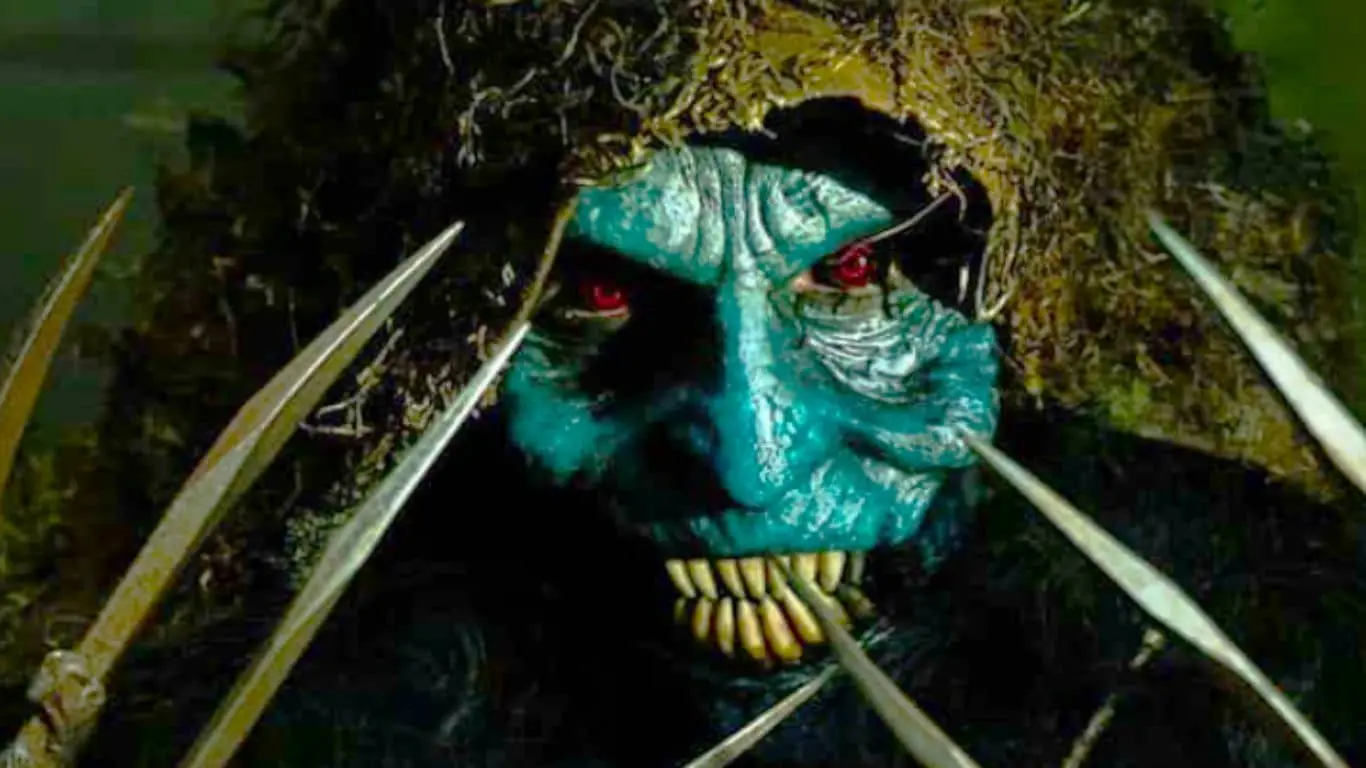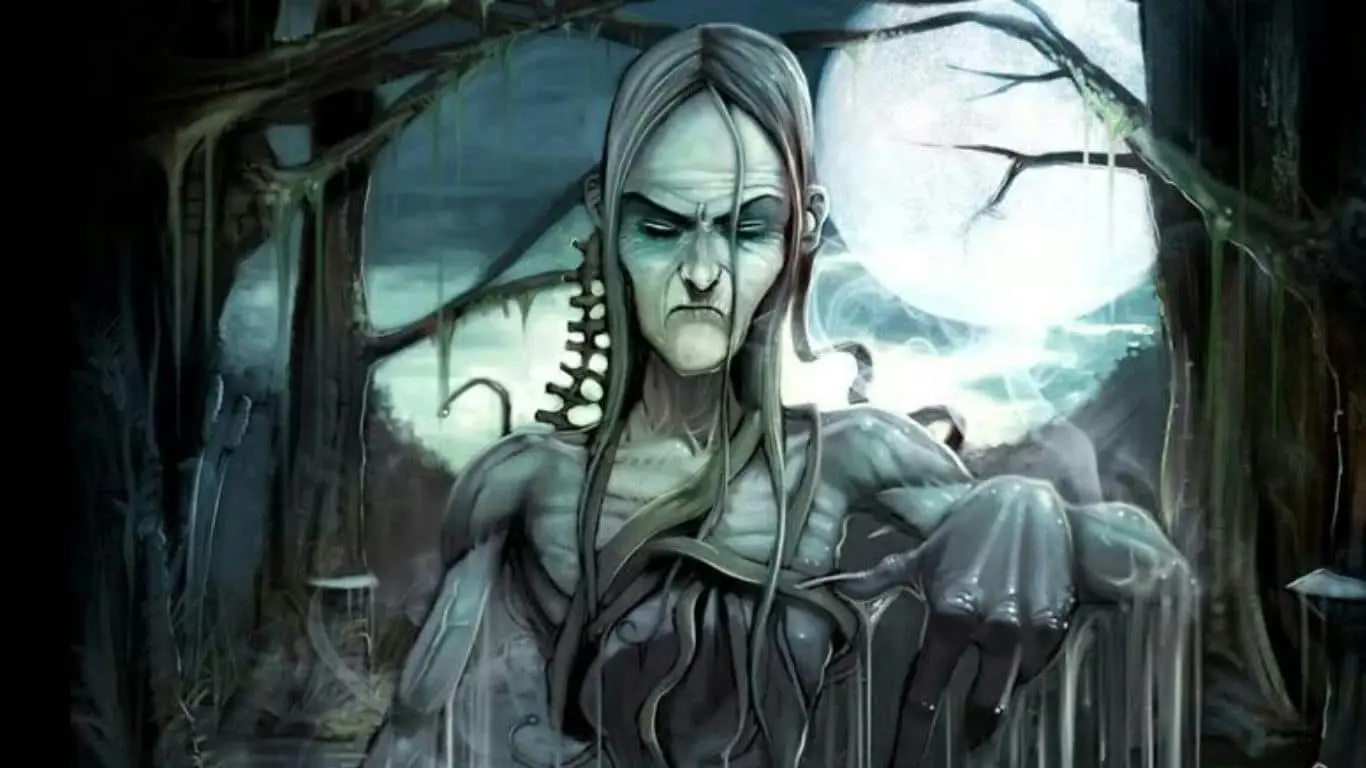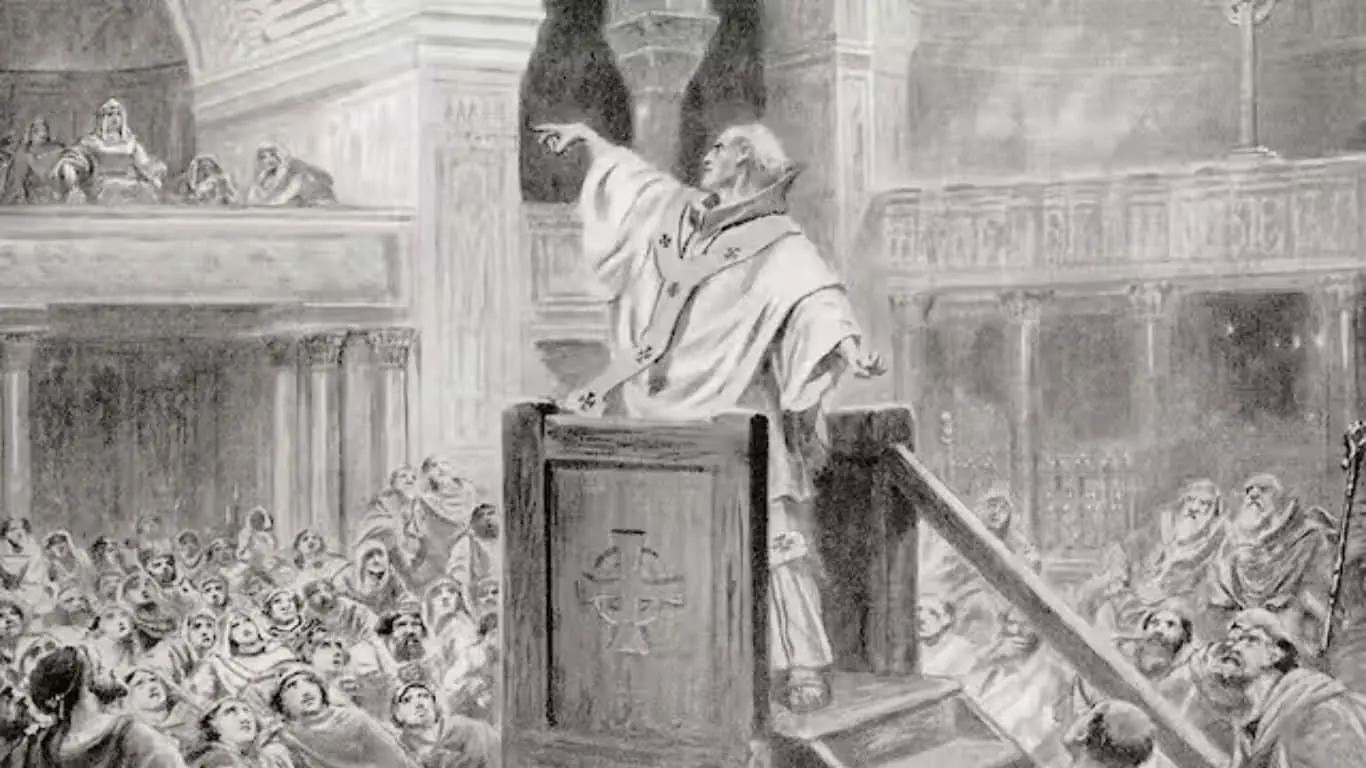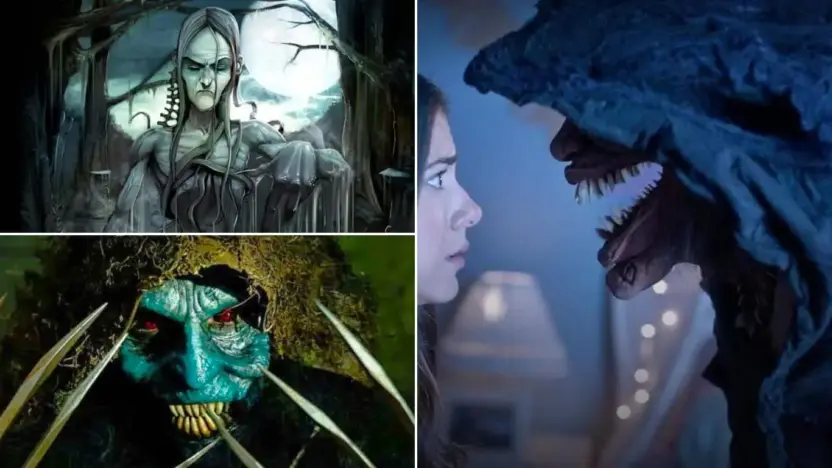In the rich tapestry of English folklore, few figures are as enigmatic and spine-chilling as Black Annis. Said to haunt the countryside of Leicestershire, this blue-skinned hag has inspired countless tales that both fascinate and terrify. With a face that has fueled nightmares for generations, iron claws to snatch her prey, and a predilection for children and lambs, Black Annis embodies the deepest fears of rural communities. But who is she, and where did she originate? Is she a vestige of pagan beliefs, a cautionary tale, or perhaps an amalgamation of historical figures and older mythologies? This article delves into the shadowy corners of English folklore to explore the enigma of Black Annis and her roots.
Who is Black Annis in English Folklore and Her Origin
Origins of the Black Annis Tale

The origins of the Black Annis tale are shrouded in mystery, making it a subject of intrigue for historians, folklore scholars, and cultural anthropologists alike. Earliest mentions, such as an 18th-century title deed referring to “Black Anny’s Bower Close,” indicate a long-standing association with specific locales in England. Scholarly theories about her origins span a wide range—some link her to ancient Celtic and Germanic mythologies, suggesting she may be a derivative of goddesses like Danu or Hel. Donald Alexander Mackenzie went further to relate her to a plethora of ancient mother goddesses from different cultures, known for their terrible aspect of devouring children.
Contrary to these theories, Ronald Hutton, in his work “The Triumph of the Moon,” argues for a more historical basis. He suggests that Black Annis was likely modeled after Agnes Scott, a real-life anchoress or Dominican nun. Hutton believes that her transformation into the terrifying Black Annis might be a product of anti-anchorite sentiments during the Protestant Reformation. This theory finds some support in an 1842 issue of the Leicester Chronicle, which previously made the connection between Agnes Scott and Black Annis.
Further complicating the origin story is modern literature like the poem by John Heyrick, which amplifies her terrifying attributes, describing her as a monster with human trophies. As with many myths, the tale of Black Annis likely evolved over time, amalgamating historical events, religious transformations, and cultural imaginations into the enduring and haunting figure we know today.
The Legend Unveiled: Key Elements of the Black Annis Myth

The myth of Black Annis is not merely a simplistic tale designed to scare children; it’s a complex narrative rooted deeply in the fears and traditions of the communities that have perpetuated it. Several key elements make this legend both unique and terrifying.
Physical Attributes
Black Annis is often described as a blue-skinned witch with fearsome iron claws. Her appearance alone is said to instill terror, making her easily recognizable in the various tales in which she features.
The Cave Dwelling
The lair of Black Annis is as memorable as the hag herself. Situated in the Dane Hills of Leicestershire, her cave—often referred to as Black Annis’ Bower—has been a focal point of local superstitions. It’s said that she would tan the skins of her victims and hang them on the walls of her cave.
Predatory Behavior
Black Annis preys primarily on children and lambs. Legends often warn of her creeping out of her cave to snatch her unsuspecting victims, whom she would then devour, leaving communities in a state of perpetual dread.
Rituals for Protection
The legend has led to various protective rituals and practices. Some say that locals would whitewash their windowsills or leave gifts to appease her and protect their children, further embedding the myth in the daily lives of those who believed it.
Association with Darkness and Winter
Black Annis is particularly associated with the darker times of the year. Her myth reaches a peak during winter, where the long nights provide a fertile ground for imagining her creeping out of her dark lair.
Social Function
Lastly, the legend serves a social function, often employed to keep children close to home and warn them of the dangers that could befall them if they stray too far, embodying societal fears in a single, monstrous figure.
The key elements of the Black Annis myth together weave a tapestry rich in detail, meaning, and cultural significance, making her one of the most compelling figures in English folklore.
Geographical Roots

The geographical roots of the Black Annis legend are deeply intertwined with the landscape of Leicestershire, a county in the East Midlands of England. This particular localization adds an extra layer of specificity and believability to the myth, cementing it as a tangible part of the local culture.
Dane Hills: The Epicenter
The Dane Hills, a series of hillocks situated near Leicester, serve as the epicenter for the Black Annis lore. This rugged terrain is home to Black Annis’ Bower, the mythical cave where she is said to reside. The very name of the location adds to the enigma; while it is often associated with the hag, the term “bower” traditionally implies a pleasant, shaded area—contradicting the terrifying nature of Black Annis.
Natural Features that Feed the Myth
The geography of the Dane Hills—with its dense woodland, uneven topography, and remote corners—provides the perfect backdrop for a haunting tale. Its seclusion and dark wooded areas contribute to the atmosphere of fear and mystery that surrounds the legend. Local streams and other water bodies also feature in some versions of the tale, serving as places where Black Annis would wash the entrails of her victims.
Old Roads and Paths
Ancient roads and footpaths that crisscross the region have often been cited in stories as routes that Black Annis might take to invade neighboring communities. The presence of these old pathways makes the story even more convincing, as it places the legend within a real and navigable landscape.
Proximity to Settlements
Leicester and surrounding villages have been profoundly affected by the Black Annis legend. The relative proximity of populated areas to the mythical haunts of Black Annis adds a sense of immediate threat and urgency to the lore. It’s not just a story set in a faraway land; it’s a cautionary tale located right in the community’s backyard.
Place Names and Local Sites
Certain local place names and sites have been associated with Black Annis, further localizing the legend. For example, some tales connect her to specific trees, hollows, or rock formations, and local tours and folklore events often incorporate these locations, adding yet another layer of authenticity to the stories.
The geographical roots of the Black Annis legend not only serve to localize the tale but also enrich its narrative complexity. Through its connections with real landscapes and locations, the story gains a level of credibility and immediacy that has helped it endure through the centuries.
Pagan or Christian? Religious Contexts and Interpretations

The religious contexts and interpretations surrounding the Black Annis legend are complex and multifaceted, reflecting the interplay between Pagan and Christian traditions over time. The figure of Black Annis herself embodies elements that resonate with both religious frameworks, making her a subject of enduring debate among scholars and folklore enthusiasts alike.
Pagan Origins?
Many theories suggest that Black Annis has her roots in ancient pagan traditions, possibly originating from Celtic or Germanic goddesses like Danu or Hel. She has also been associated with the devouring mother goddess archetype found in various ancient religions, from the Indic Kali to the Greek Demeter. These connections suggest a syncretism of ancient pagan elements that were later incorporated into local folklore.
Christian Adaptation
Over time, figures from pagan mythology often underwent Christianization, either to ease the process of conversion or to demonize pre-existing deities and beliefs. Black Annis, with her terrifying features, could have been molded into a cautionary Christian tale about the dangers of pagan worship or the perils that await the sinful. Her narrative as a child-snatcher also aligns with the medieval Christian notion of the witch—a woman in league with the devil.
Agnes Scott: A Christian Anchoress
Contrastingly, Ronald Hutton’s theory posits that Black Annis was actually a Christian figure, modeled after Agnes Scott, a late medieval anchoress or Dominican nun. According to this interpretation, the terrifying characteristics attributed to Black Annis might have been exaggerations fueled by anti-anchorite sentiments during the Protestant Reformation.
The Blurring Lines
Adding further complexity to the religious interpretations are modern influences like Wiccan groups, who have embraced Black Annis as a representation of the Great Goddess in her crone form. This re-adoption of the figure into neo-pagan contexts highlights how fluid and adaptable such legends can be, resonating differently across various religious landscapes.
The Complexity of Syncretism
The Black Annis legend likely incorporates both Christian and Pagan elements, making her an example of religious syncretism. In a way, she stands as a testament to the complex interplay between indigenous belief systems and organized religion, demonstrating how folklore can serve as a melting pot of spiritual and cultural narratives.
The Evolution of Black Annis Myth Over Time

The Black Annis legend has undergone significant transformations over the years, mirroring changes in societal beliefs, religious perspectives, and even local histories. This malleability has allowed her to remain a subject of fascination and even devotion, while also serving as a lens through which to examine broader cultural shifts.
From Cave to Chronicle: Early References
The earliest references to Black Annis can be traced back to 18th-century title deeds and then move into more detailed accounts in 19th-century publications like the “County Folklore.” These early mentions set the stage for her character but leave much to interpretation.
Pagan Goddess to Christian Witch
Initially tied to possibly pagan deities like Danu or Hel, Black Annis was likely reinterpreted during the medieval period as Christianity spread. Here, she transitioned from a potentially divine figure to a monstrous witch, reflecting Christian efforts to suppress or reinterpret pagan beliefs.
Historical Figures and Real-Life Inspirations
Another layer of complexity was added with the suggestion that Black Annis was based on a real individual, Agnes Scott, a theory notably put forward by historian Ronald Hutton. This theory implies that the terrifying aspects attributed to Black Annis might have been distortions or exaggerations developed over time.
Literature and the Romantic Period
The 19th century saw an increased interest in folklore, and the legend of Black Annis was popularized through works like John Heyrick’s poem. This literary romanticization solidified her terrifying traits and extended her influence beyond local tales.
Modern Neo-Paganism and Wicca
In recent years, Wiccan and other neo-pagan groups have adopted Black Annis as a representation of the crone aspect of the Triple Goddess. This modern reinterpretation serves as a reclamation of her potential ancient pagan origins.
Media and Popular Culture
The 20th and 21st centuries have brought Black Annis into the realm of popular culture, where she has appeared in novels, movies, and video games, often as a fearsome antagonist. This has served to introduce the myth to new audiences, albeit in forms that are far removed from its historical or religious origins.
As a folklore figure, Black Annis is not static. She continues to evolve, reflecting current cultural, social, and even political climates. Whether she serves as a cautionary tale, a religious figure, or a pop-culture icon, her legend persists, adaptable and enduring. The evolution of the Black Annis myth over time reveals how folklore is not a fixed entity but a dynamic one, adapting and shifting to meet the changing needs and understandings of the society that engages with it.
Also Read: Baba Yaga: Characteristics, Family Dynamics and Her Love for Mischief



